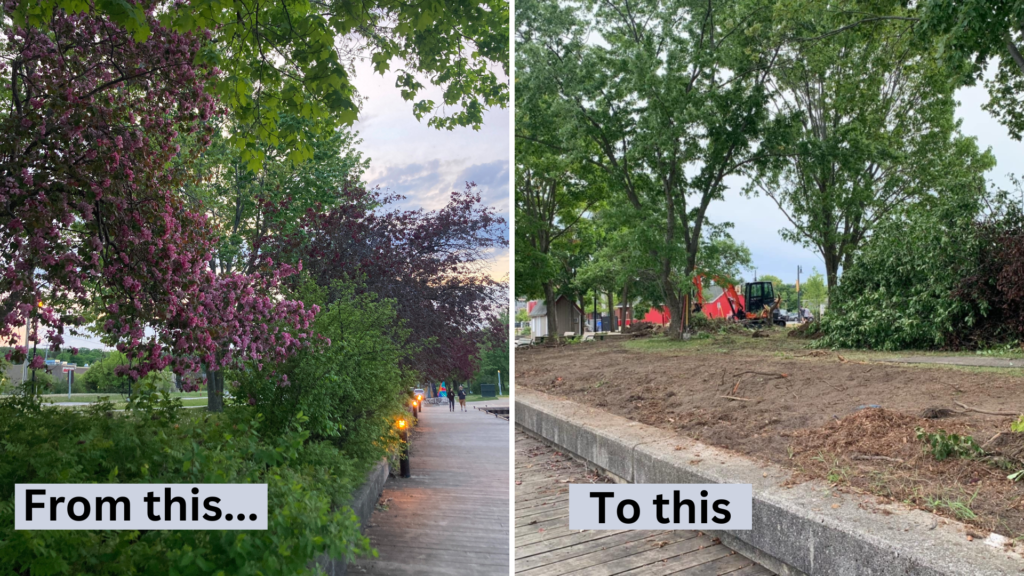For many years, Orillia residents have enjoyed a lush, beautiful wall of greenery at the Port of Orillia boardwalk filled with mature trees, shrubs, native plants, ornamental plants, and even an edible fruit-bearing shrub. This plant cover was important for a number of reasons: habitat for animals and species, soil erosion control, biodiversity, a buffer zone between the waterfront and urbanized downtown, aesthetic and recreational value, and climate resilience.
This past summer, we also discovered an edible fruit-bearing shrub there: the nanking cherry. Nanking cherry is a compact, ornamental, and low-maintenance cherry bush. Native to northern and western China, Korea, Mongolia, and possibly northern India, it is difficult to find this plant locally or commercially – a rare treasure! We enjoyed snacking on them throughout the spring and summer, as did many critter friends.

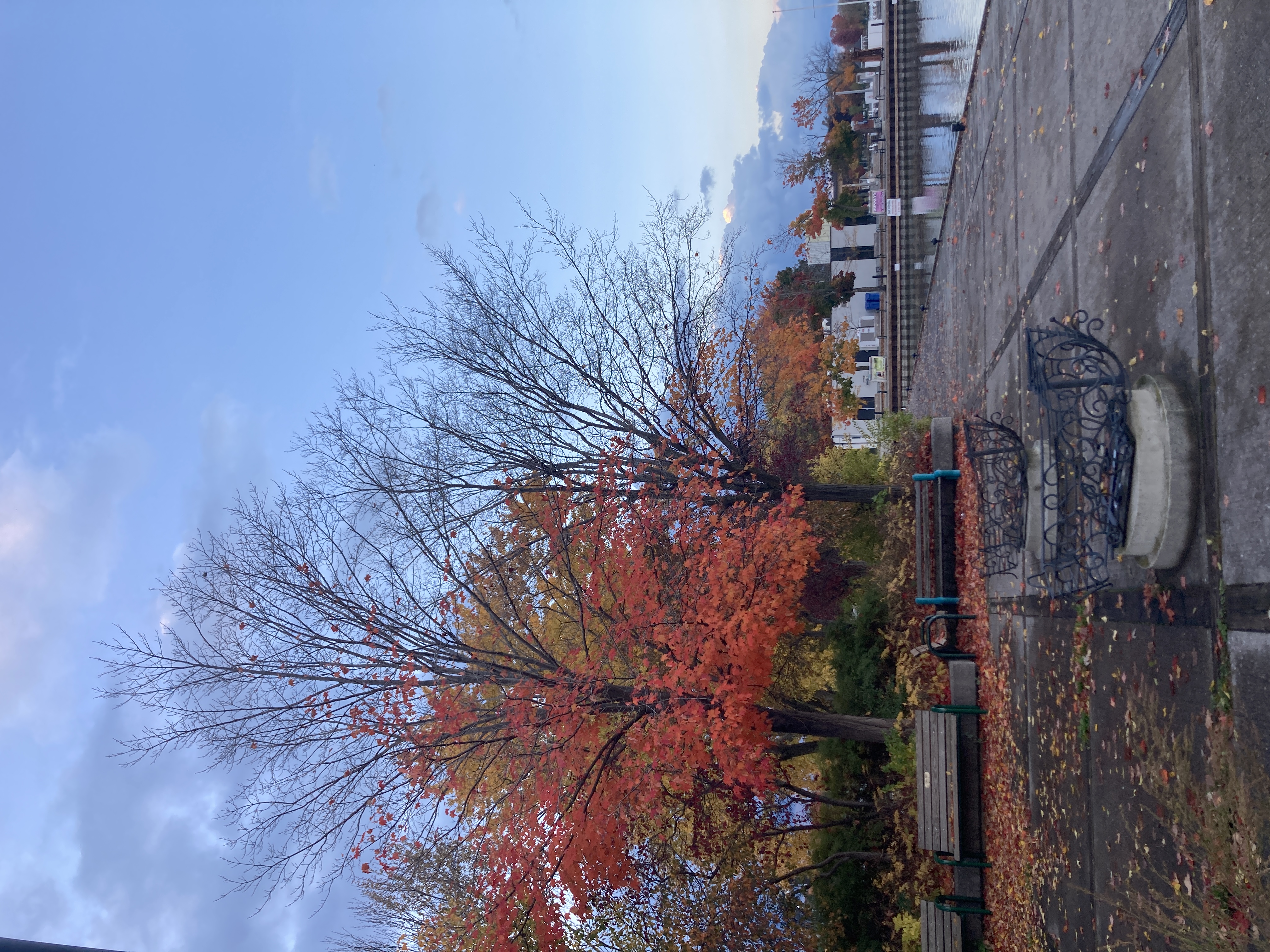
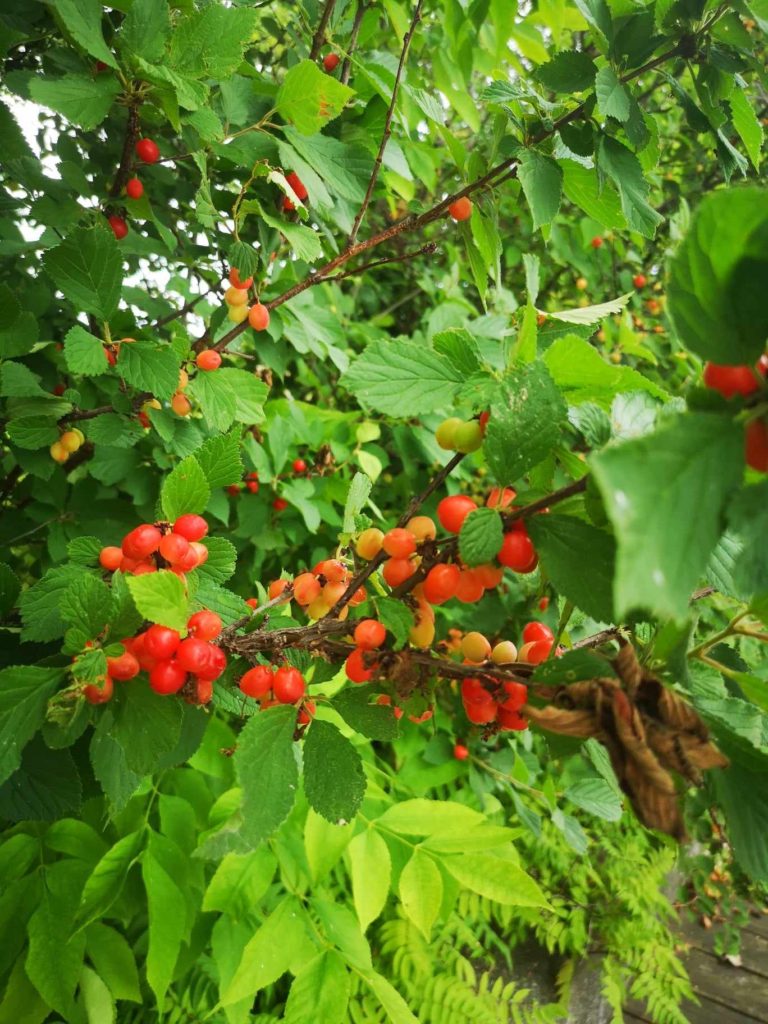
On August 6th, 2024, to my surprise, the entire plant cover was clear cut by the city. I contacted two different city councillors about this matter and neither one knew why this happened, nor were they aware of it in advance.
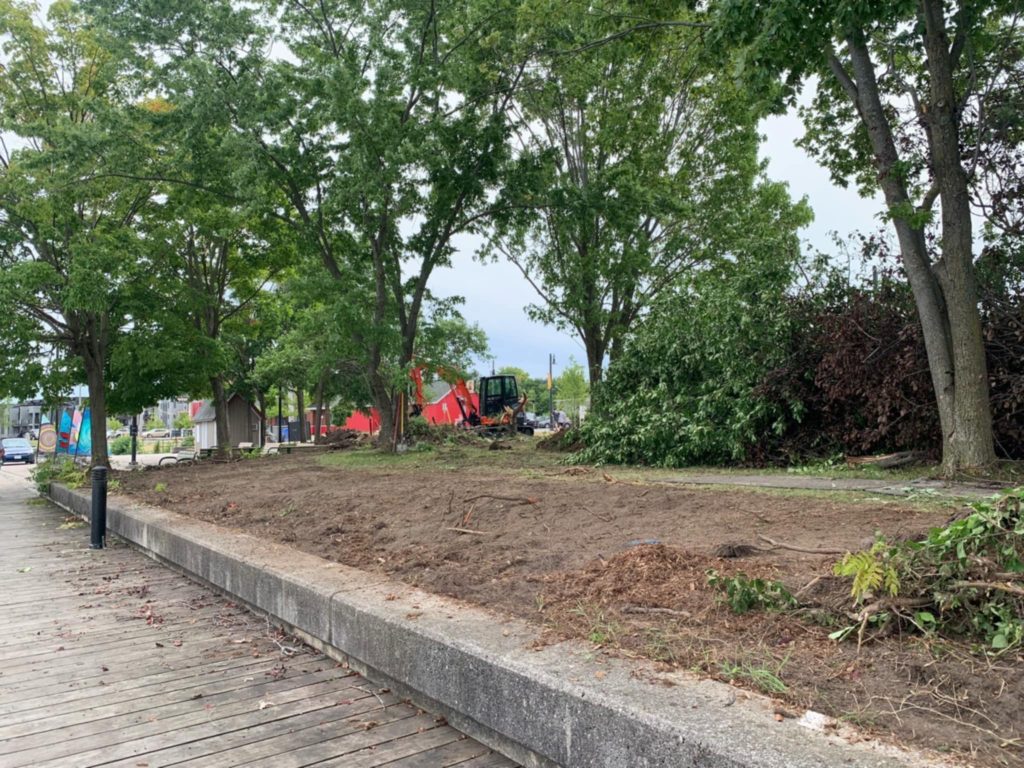
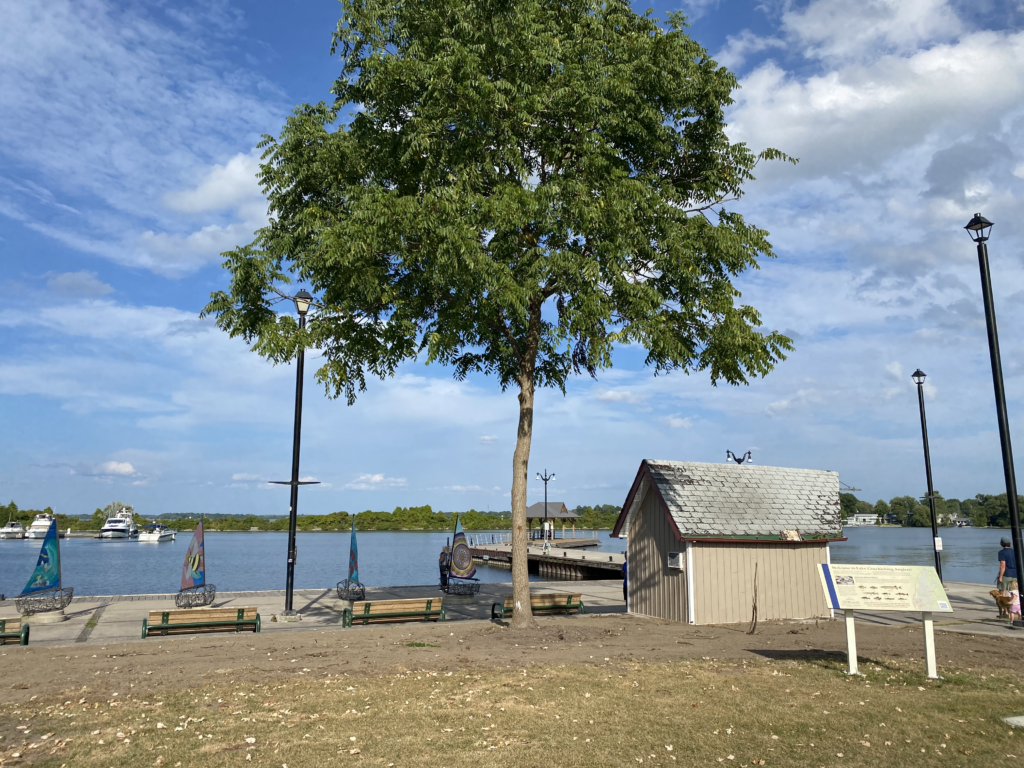
So, I took the matter to the Climate Change & Environmental Sustainability Working Group which I am a part of. My recommendations included:
- Request a Public Inquiry: Formally request an inquiry or investigation into why the plant cover was removed without prior notice or community consultation.
- Advocate for the immediate replanting of native shrubs and plants to restore the lost habitat and ecosystem functions.
- Propose a review of city policies related to environmental management and public space changes to ensure better communication and adherence to ecological principles. Ensure transparency and accountability, and determine whether the action was in line with environmental policies (particularly the Climate Change Action Plan). Propose the establishment of a system for notifying and consulting residents and stakeholders about major changes or projects affecting public green spaces.
Well, it turns out that the public inquiry wasn’t needed after all, as we got our answers at the meeting thanks to an email from John McMullen, the city’s Manager of Parks Planning and Development that was attached in our meeting agenda (read the email in the screenshot below or here – bottom three pages):
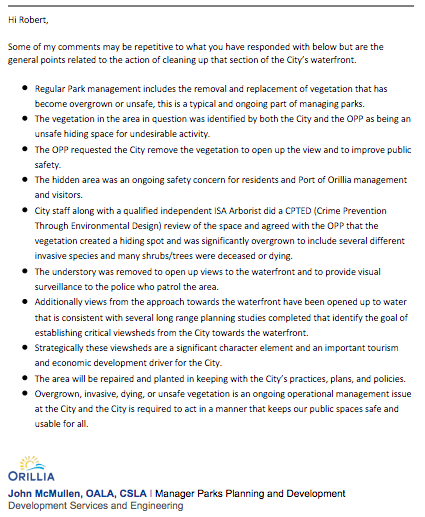
Let’s unpack John’s email, which outlines why the city decided to clearcut this area:
The OPP and the city claim to have identified this area as being an ‘unsafe hiding space for undesirable activity’. This can be only be interpreted in a way that disproportionately targets vulnerable populations like the homeless or people who use drugs.
This situation touches on a broader issue where cities often engage in “defensive urban architecture” or “hostile architecture,” such as installing benches with bars to prevent people from lying down or cutting vegetation to prevent encampments. While the city may present these actions as being motivated by public safety, they often end up pushing vulnerable people further into invisibility or criminalizing their presence in public spaces.
A restorative justice approach that the city could have and should have taken :
- Community Consultation and Participation: The city could have initiated a transparent consultation process, including input from the public, housing advocates, social workers, and vulnerable populations to develop a more humane and inclusive solution.
- Supporting Vulnerable Populations: Instead of clear cutting the shrub cover to prevent “undesirable activity,” the city could have invested in services to support homeless individuals and people who use drugs. For example, they could have focused on providing services like advocating for safe consumption sites or employing outreach workers to engage with people who use drugs. Harm reduction programs are evidence-based methods to reduce the harm associated with drug use while providing pathways to treatment and support.
- Environmental design: Rather than clearcutting an entire area, the city could have implemented landscaping changes that balance safety with maintaining public green spaces. They could design areas that discourage harmful activity but still support visibility and accessibility, such as regular pruning, native planting with lower vegetation, installing more lighting, signage, public art and cultural installations, and enhancing public seating areas.
The City claimed that their staff along with a qualified independent ISA Arborist did a CPTED (Crime Prevention Through Environmental Design) review of the space and agreed that it should be cut down. I would be very curious to see the results of this CPTED and the methodology behind it.
The next argument from the city is that by clearcutting the area, we have opened up views from the waterfront which is an important tourism and economic development driver for the City. Really? How much longer are we going to put short-sighted economic development at the cost of environmental degradation? Also, who is to say that tourists value waterfront views over the natural vegetative beauty of the waterfront? The city could have actually taken advantage of the vegetative area for eco-tourism by enhancing it and developing educational signage about the biodiversity of the area.
By framing the action as a way to boost tourism, the city may also be furthering gentrification. Enhancing waterfront views for tourists and wealthy visitors risks normalizing the prioritization of the interests of outsiders over the needs of local residents, especially low-income and marginalized groups.
The final argument from the City was that the area will be repaired and planted in keeping with the City’s practices, plans, and policies. I am genuinely curious as to which practices, plans, and policies they are referring to, as just a few short weeks after clearcutting the area, the City fenced it off and re-planted it with sod – not a whole lot of biodiversity there.
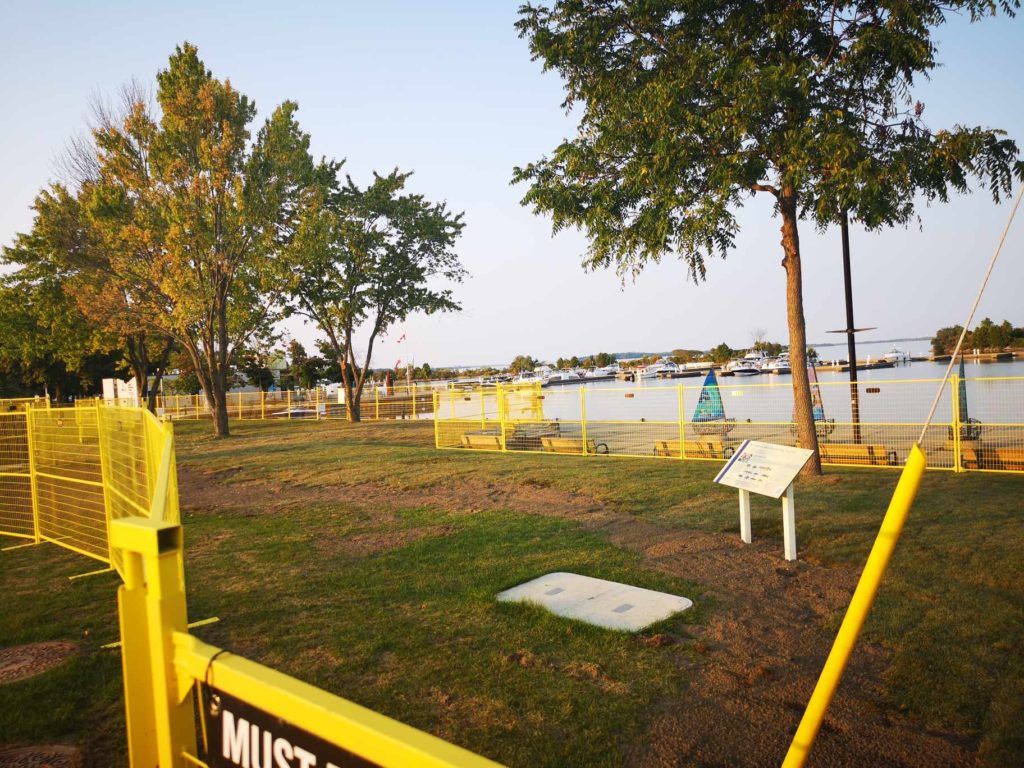
The recommendation that our working group settled on was to advocate for the re-planting of lower growing native plants and shrubs, in partnership with local environmental community groups and as a community event. We also plan to add recommendations about public consultation and transparency related to environmental matters when it comes time for the City to update their bylaw policies. I will keep you updated on how this all proceeds.
PS – we saved hundreds of pits from the nanking cherry tree and were even able to rescue some wooden stems to replant – if you would like to help us out in a participatory breeding project to get more of these growing, please reach out!

Article by Madeleine Fournier of Green Orillia
